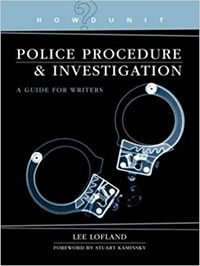Countdown to 2024 KILLER CON
Writers’ Police Academy
The 2024 Writers’ Police Academy is a special event called Killer Con, which is designed to help writers create stunning realism in their work, Killer Con focuses on the intricate details surrounding the crime of murder and subsequent investigations.
Visit The WPA website to register!
*The Writers’ Police Academy (WPA) is held every year and offers an exciting and heart-pounding interactive and educational hands-on experience for writers to enhance their understanding of all aspects of law enforcement, firefighting, EMS, and forensics.
Get to Know Lee Lofland
Lee Lofland is a nationally acclaimed expert on police procedure and crime-scene investigation, and is a popular conference, workshop, and motivational speaker.
Lee has consulted for many bestselling authors, television and film writers, and for online magazines. Lee has appeared as an expert on national television, BBC Television, and radio shows.
Lee is the host and founder of the Writers’ Police Academy, an exciting, one-of-a-kind, hands-on event where writers, readers, and fans learn and train at an actual police academy.
To schedule Lee for your event, contact him at lofland32@msn.com

